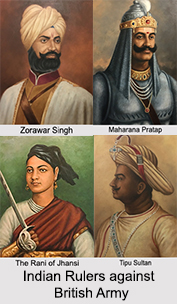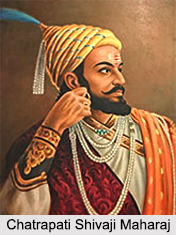 Indian Rulers against British Army inspired the spirit of courage and valour in Indian soldiers. India was a land of brave kings and queens who took every arrow and blow upon themselves to save their kingdoms from alien powers. Whether it was the British or the Greeks, these Indian rulers proved to be great obstacles between them and their cunning plans of taking over the country.
Indian Rulers against British Army inspired the spirit of courage and valour in Indian soldiers. India was a land of brave kings and queens who took every arrow and blow upon themselves to save their kingdoms from alien powers. Whether it was the British or the Greeks, these Indian rulers proved to be great obstacles between them and their cunning plans of taking over the country.
British Rule in India depended on co-operation and good relations with Indian rulers — especially during the 1st century. Indian rulers were on great terms with the British and provided soldiers, arms, ammunitions, planes and princes to fight in World War I and World War II. Some of the Indian Rulers who were against the British Army are mentioned below:
Zorawar Singh
Zorawar Singh, born in 1786 in a Rajput family of Himachal Pradesh, the General was under the command of Maharajah Ranjit Singh and Raja Gulab Singh from 1820-41. He was a most intrepid and aggressive warrior. A master of mountain warfare, he led an army 6 times over the snow clad ranges of Ladakh and Baltistan. He also led forays into Taklakota in western Tibet where he died in harness in battle in 1841.
Tipu Sultan
Tipu Sultan, "The Tiger of Mysore" was born on 20th November, 1750. He ruled the kingdom of Mysore from 1785 to 1799. Tipu is remembered as a learned man, a linguist and a patriot. Along with his father Hyder Ali, he defeated the British in the Mysore War II. Tipu died defending his capital Srirangapatnam on 4th May 1799.
 Maharana Pratap
Maharana Pratap
Rana Pratap ascended the throne of Udaipur during Akbar"s time. He was almost alone in his fight against the emperor. He relentlessly fought to regain his lost strong holds, one by one. Till his death, all of Mewar except Ajmer, Chittorgarh and Mandalgarh were freed.
Rani of Jhansi
The queen of the Maratha-ruled princely state of Jhansi in North India was one of the greatest women of the Indian rebellion of 1857, and a symbol of resistance to British rule in India.
Maharani Lakshmi Bai, better known as “Jhansi ki Rani†was born in 1828. She married the Maharaja of Jhansi in 1842. On the death of her husband when the British did not accept their adopted son as heir, and tried to annex the state, Lakshmi Bai fought them till her death.
Chatrapati Shivaji Maharaj
Shivaji was born on 19th February 1630 in Shivneri Fort, Pune. He carried out his first military action by capturing Bijapur kingdom Torna Fort at the age of 16. By 1647 he had captured complete control of the Pune region and was formally crowned at the Raigarh Fort. At the end of 1676, Shivaji launched a wave of conquests in southern India. He defeated and captured the Forts at Vellore and Jinji, Tamil Nadu. The concept of Guerilla warfare is attributed to Shivaji.






